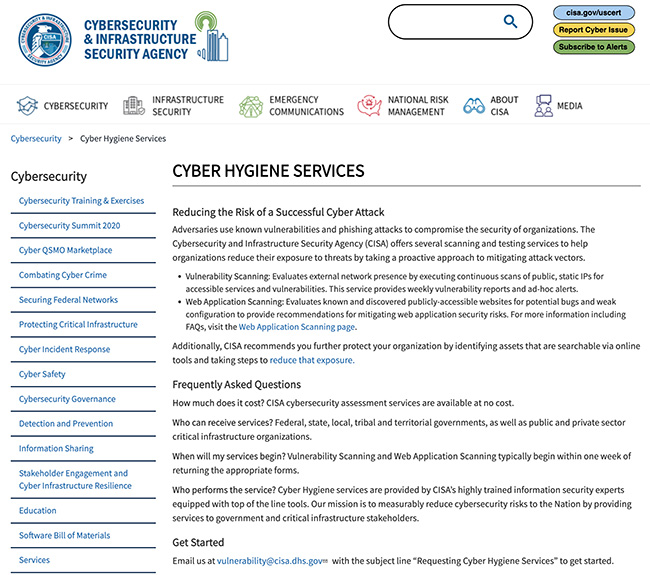The widespread adoption of remote and hybrid working practices in recent years has brought numerous benefits to various industries, but has also introduced new cyber threats, particularly in the critical infrastructure sector.
These threats extend not only to IT networks but also to operational technology (OT) and cyber-physical systems, which can directly influence crucial physical processes.
In response to these risks, the US government reinforced critical infrastructure security by introducing Cross-Sector Cybersecurity Performance Goals (CPGs) mandated by the US Cybersecurity Infrastructure & Security Agency (CISA).
Recently, CISA updated the CPGs to align with NIST’s standard cybersecurity framework, establishing each of the five goals as a prioritized subset of IT and OT cybersecurity practices.
In this article, we will look in more detail at CISA’s revamped CPGs and discuss the potential solutions available to help organizations achieve these critical goals.
CPG 1.0 Identify: Scoping out the vulnerabilities in the OT environment
CISA’s first CPG is “Identify”, which includes identifying the vulnerabilities in the IT and OT assets inventory, establishing supply chain incident reporting and vulnerability disclosure program, validating the effectiveness of third-party security controls across your IT and OT networks, establishing OT security leadership, and mitigating known vulnerabilities. Critical infrastructure organizations must address all these sub-categories exclusively to achieve the first CPG.
Addressing these responsibilities requires a dynamic effort. Firstly, organizations must strengthen their IT and OT relationship by fostering more effective collaboration between the security teams of both departments. But, most importantly, IT and OT teams must come together to understand the potential cyber threats and risks of each environment and how it affects the other. To achieve the first CPG, it is critical that these departments are not kept in isolation but rather collaborate and communicate frequently.
At the same time, organizations must establish OT leadership by clearly identifying a single leader who will be responsible and accountable for OT-specific cybersecurity. From there, organizations must create an asset inventory or glossary that clearly identifies and tracks all OT and IT assets across the entire ecosystem. These assets should be regularly audited based on their vulnerability management program. It’s also highly critical to have an open, public, and easily accessible communication channel where vendors, third parties, or employees can disclose any potential vulnerability in relation to the OT and IT assets.
CPG 2.0 Protect: Safeguarding privileged access to OT assets
CISA’s second CPG is “Protect”, which emphasizes the account security aspects of OT assets. To achieve this goal, critical infrastructure organizations are required to strengthen their password policies, change default credentials across OT remote access systems, apply network segmentation to segregate OT and IT networks, and separate general user and privileged accounts.
Addressing all these aspects of account security can be a chore for most organizations, but they can turn to unified secure remote access (SRA) solutions that can extend multiple account-level security controls to OT remote users via enforcement of multi-factor authentication (MFA), least privilege policies, and role-based access. Such solutions can also support advanced credential policies to further reduce the risk of unauthorized access and denial of service attacks.
It’s also important that organizations only leverage SRA solutions that are based on zero trust policies. This will help organizations establish effective network segmentation that eliminates direct, unfettered remote connectivity to OT assets, and to continuously monitor personnel activity during all remote OT connections.
CPG 3.0 Detect: Awareness of critical threats and potential attack vectors across your OT environment
CISA’s third CPG emphasizes the detection of relevant threats and knowledge of potential attack vectors and TTPs (tactics, techniques, and procedures) that can compromise OT security and potentially disrupt critical services.
Detecting relevant threats and TTPs across OT assets and networks requires a proactive approach that combines advanced monitoring and analysis. Real-time monitoring solution should be complemented with comprehensive network visibility, allowing for the swift detection of anomalies and unusual patterns.
A critical aspect of threat detection in OT environments — and meeting the CPG mandate — is the sharing of information and collaboration between various stakeholders. Threat intelligence platforms play an essential role in gathering and disseminating information about current and emerging threats. By leveraging this valuable data, organizations can stay ahead of potential risks, fine-tune their defenses, and ensure the safety and security of their OT assets. Additionally, conducting regular security assessments, penetration testing, and vulnerability scanning will help uncover any weaknesses in the infrastructure, allowing for timely remediation and improved resilience against cyberattacks.
CPG 4.0 and 5.0: Respond and Recover
The final two CISA’s CPGs stress the importance of incident reporting and planning. Regardless of how robust your OT security practices are, cyber threats are almost inevitable in today’s interconnected and increasingly remote networking era. So, while proactive security solutions are necessary, attacks still are unavoidable, especially in a highly targeted sector like critical infrastructure.
Therefore, CISA stresses that organizations must have a comprehensive plan and process outlined for reporting security incidents and effectively recovering their affected systems or services upon a breach.
Advanced SRA solutions can help organizations to achieve these goals through automated recording of user activities and asset-related data, as well as creating automated backups of critical data. More specifically, they can log all user sessions, encrypt all user- and asset-related data, and retain logs of OT remote user activity. These measures help to ensure that critical information is stored in accordance with all relevant regulatory requirements and backup and recovery needs.
Conclusion
Overall, the vulnerabilities of ageing OT assets and siloed OT and IT networks have created a significant threat to critical infrastructure entities, which has been further exacerbated by the prevalence of remote access.
CISA’s OT-specific goals and actions within the CPGs provide a much-needed set of guidelines for CNI organizations to strengthen their security posture and increase cyber resilience. By following CISA’s recommendations and employing innovative security technologies, organizations can minimize the risk of cyberattacks affecting the physical world and public safety.


InfoSec tools | InfoSec services | InfoSec books













![CYBERSECURITY AND INFRASTRUCTURE SECURITY AGENCY: Actions Needed to Ensure Organizational Changes Result in More Effective Cybersecurity for Our Nation by [United States Government Accountability Office]](https://m.media-amazon.com/images/I/51FIzAXr-CL._SX260_.jpg)





![Cybersecurity Awareness Month 2021 Toolkit: Key messaging, articles, social media, and more to promote Cybersecurity Awareness Month 2021 by [Cybersecurity and Infrastructure Security Agency]](https://m.media-amazon.com/images/I/41qNh1aMMNL._SX260_.jpg)


